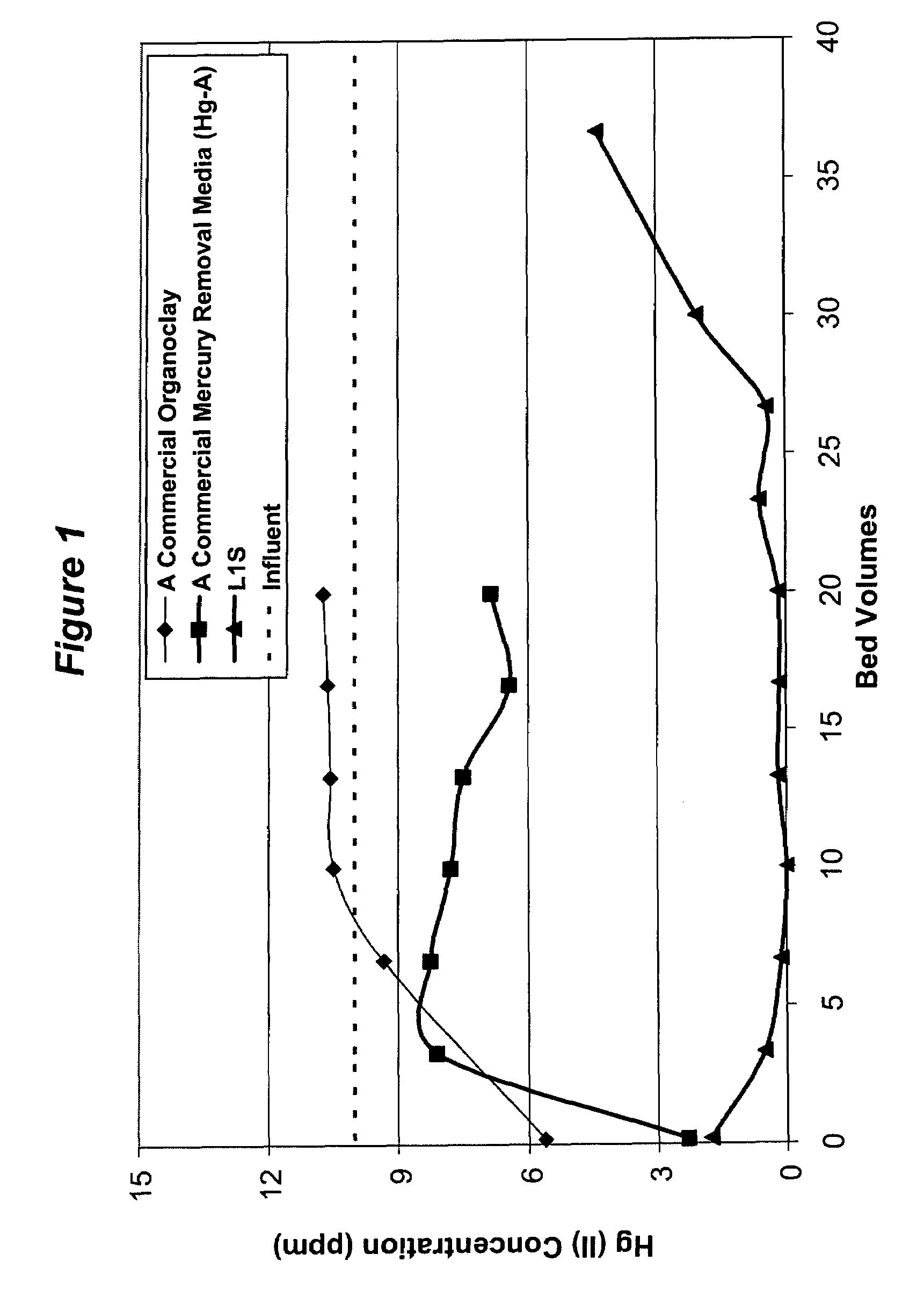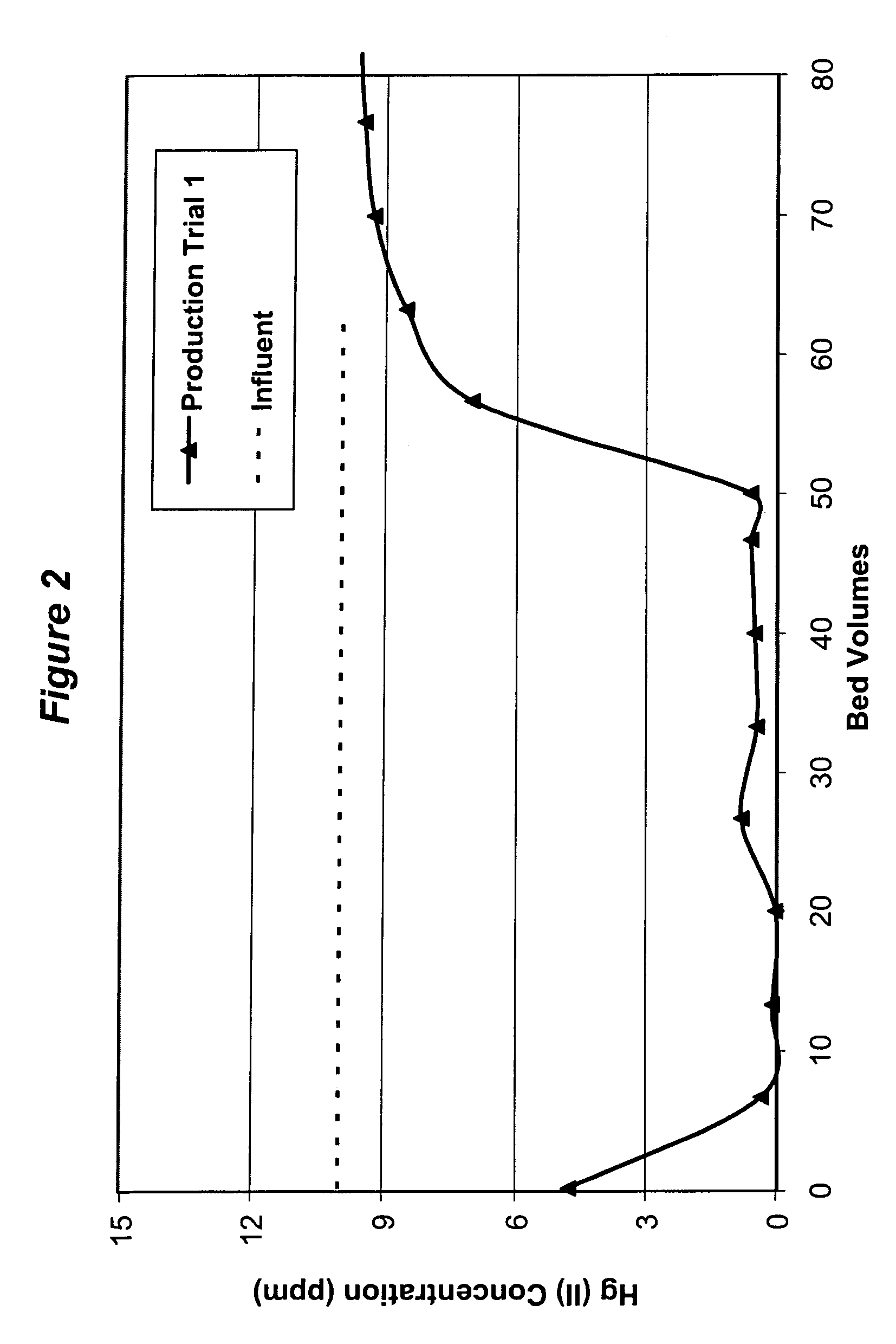Sulfur-impregnated and coupling agent-reacted organoclay mercury and/or arsenic ion removal media
a technology of coupling agent and organoclay, which is applied in the direction of physical/chemical process catalyst, water softening, and other chemical processes, can solve the problems of synergistic removal of mercury and arsenic (arsenite and arsenate compounds), and insufficient efficiency of mercury and arsenic removal technology, etc., to achieve the effect of increasing the d-spacing of clay platelets, increasing stability
- Summary
- Abstract
- Description
- Claims
- Application Information
AI Technical Summary
Benefits of technology
Problems solved by technology
Method used
Image
Examples
examples
[0040]N-tallow-1,3-diaminopropane (Duomeen® T); N-tallowalkyl dipropylene triamine (Triameen® T); and N-tallowalkyl tripropylene tetramine (Tetrameen® T).
[0041]Cationic polymers, non-ionic polymers, including homopolymer or copolymer, low molecular weight or high molecular weight
example 1
Sample L1S
[0051]400.0 g of bentonite clay (particle size<75 μm preferred, and ˜8% moisture content) was dry-mixed with 28.75 g of sulfur in the powder form (purchased from Aldrich) using the Kitchen Aid mixer for one minute. 80.0 g of deionized water was added to this bentonite-sulfur mixture slowly under shearing using the same mixer and mixed for ˜2 minutes. 209.6 g of melt quat (ARQUAD® 2HT from Akzo Nobel, bis(hydrogenated tallow alkyl)dimethyl ammonium chloride,˜83% active ) was added to this clay-sulfur-water mixture under shearing using the same mixer, and mixed for 5 minutes. The mixture was extruded three times using a laboratory-scale extruder with a die-plate, and the final extrudates were oven-dried at 85° C. to a moisture content of less than 5% by weight. The dried extrudates were ground and resulting particles between 18 and 40 mesh (US standard sieves) were collected and tested for their performance.
example 2
[0052]The media material collected in Example 1 was packed in a column having an inner diameter of 1.5″ and having an empty bed volume (BV) of ˜86 mL. The influent was composed of ˜10 ppm of Hg(II) in the presence of nitric acid. The effluent samples were taken at regular intervals and the mercury content was measured by the Inductively Coupled Plasma (ICP) analytical technique. The flow rate was about 10 BV / hr with a 6-minute retention time. The effluent data is plotted in FIG. 1. A commercial organoclay media Hg-A (without sulfur) is also included in this study for the comparison purpose.
PUM
| Property | Measurement | Unit |
|---|---|---|
| retention time | aaaaa | aaaaa |
| empty bed volume | aaaaa | aaaaa |
| volume | aaaaa | aaaaa |
Abstract
Description
Claims
Application Information
 Login to View More
Login to View More - R&D
- Intellectual Property
- Life Sciences
- Materials
- Tech Scout
- Unparalleled Data Quality
- Higher Quality Content
- 60% Fewer Hallucinations
Browse by: Latest US Patents, China's latest patents, Technical Efficacy Thesaurus, Application Domain, Technology Topic, Popular Technical Reports.
© 2025 PatSnap. All rights reserved.Legal|Privacy policy|Modern Slavery Act Transparency Statement|Sitemap|About US| Contact US: help@patsnap.com



